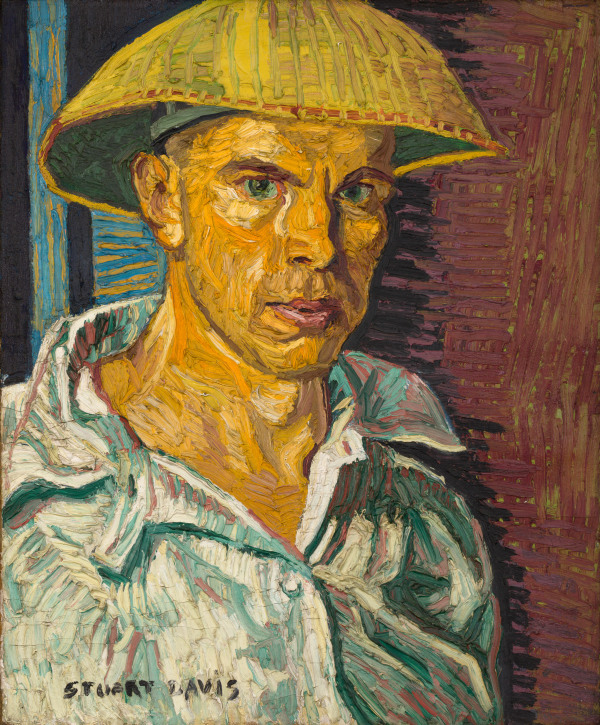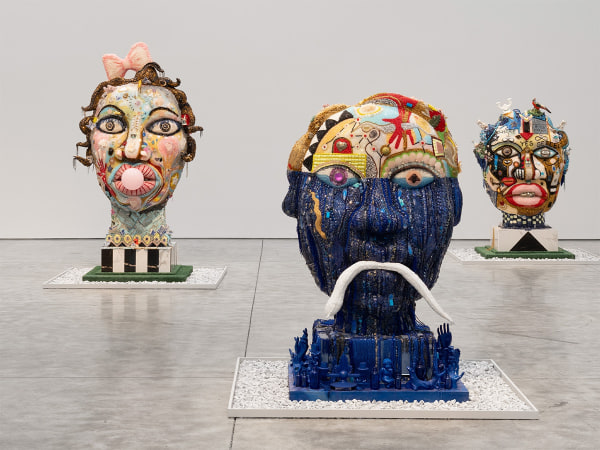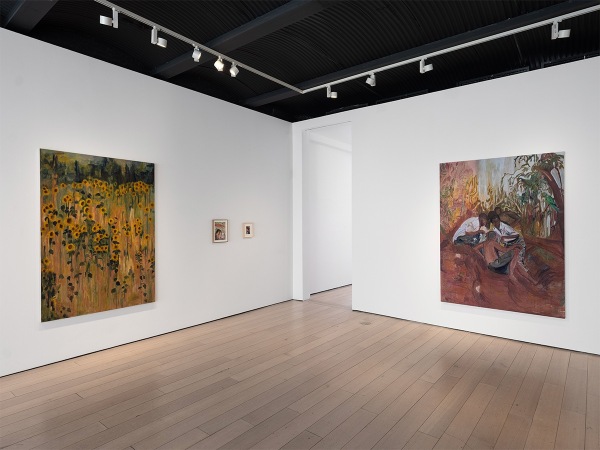Stuart Davis in Havana
-
-
Stuart Davis in Havana is an exhibition of ten evocative early watercolors painted in 1920 following Stuart Davis’ brief yet formative trip to Cuba, where the artist convalesced after contracting Spanish flu. Curated by Priscilla Vail Caldwell in collaboration with Earl Davis and the Estate of Stuart Davis, the exhibition also presents a trove of archival material documenting the artist’s trip including postcards, lottery tickets, and the painter’s passport.
-
On December 31st, 1919, Davis joined his close friend and fellow painter Glenn O. Coleman in Havana. Due south of Florida and just 110 miles offshore, Havana attracted those seeking adventure, with the temptation of late, boozy nights, or as writer Gilbert Seldes described for The New Yorkerin 1926, “The hours kept are Harlem Hours.” Over a century later, as we emerge from the Covid-19 pandemic, our understanding of deprivation, desire for novel experiences, as well as the creative inspiration that unfamiliar environments can provide, is equally acute. Davis’ observations, those of an eager traveler, communicate to us directly despite the passage of time.
-

-
Compelled by the burgeoning spirit of Modernism and crafting an original visual vocabulary, in his Havana watercolors we see Davis unleashed, boldly experimenting with flat planes of bright color. Works such as Dancers on Havana Street (1920) and Woman with Shawl(1920) are comprised of angular silhouettes rendered in bold hues, purple, ocher, black, bright yellow, and deep red, foreshadowing works from the late 1920s in which Davis would synthesize subject-matter into an increasingly rigorous geometry defined by color rather than dimensional space.
-
-

Stuart Davis' passport dated December 10, 1919.
-

Postcard from Stuart Davis to his mother, Helen Stuart Davis. Dated January 1920.
-
-

-
Melding reality and fiction, Davis layered depictions of Havana’s natural landscape with detailed architectural elements pulled from recognizable structures such as the Church Santo Angel Custodio, La Fortaleza of San Carlos de la Cabaña, or the fortifications of the old city. Parque Centrale—Cuba (1920) includes a broken outline of the park’s statue of political figure Carlos Manuel de Céspedes amongst pulsating swaths of color. These translucent washes of paint allow images to shift in and out of focus, generating an ephemerality associated with memory or dream.
-
-

"I made two watercolors yesterday and have made 20 sketches. I will be in full swing in 2 days." Postcard from Stuart Davis to his mother while in Havana. January, 1920.
-

Artist photograph of Inglesia de Espíritu Santo, Havana, 1920.
-
-

-
In February 1920, Davis returned to the United States, a country in the midst of industrial and intellectual upheaval as well as robust growth. The “Roarin’ 20s” as F. Scott Fitzgerald wrote, “was going to be the greatest, gaudiest spree in history and there was going to be plenty to tell about it.” Or, in the case of Davis, plenty to paint.
Davis’s work has been exhibited worldwide and is held in the permanent collection of prominent institutions including the Museum of Modern Art, New York, NY; Metropolitan Museum of Art, New York, NY; Whitney Museum of American Art, New York, NY; Solomon R. Guggenheim Museum, New York, NY; Brooklyn Museum, New York, NY; National Gallery of Art, Washington, D.C.; Smithsonian American Art Museum, Washington, D.C.; Los Angeles County Museum of Art, CA; San Francisco Museum of Art, CA; Philadelphia Museum of Art, PA; Museo Thyssen-Bornemisza, Madrid; among many others. Recent significant exhibitions include the 2016 critically acclaimed Stuart Davis: In Full Swing, which opened at the Whitney Museum of American Art in New York, NY, and traveled to the National Gallery of Art, Washington, D.C.; de Young Museum, San Francisco, CA and Crystal Bridges Museum of American Art, Bentonville, AR.
-
-

Postcard from Stuart Davis to his mother, Helen Stuart Davis. Dated January 1920.
-

Postcard from Stuart Davis' trip to Havana, 1920.
-
-
Works
-
About the Artist

-
Explore
-

vanessa german: GUMBALL—there is absolutely no space between body and soul
April 3 – May 10, 2025 509 West 27th Street, New York, 514 West 28th Street, New YorkKasmin presents its second solo exhibition of new work by artist vanessa german (b. 1976), which debuts related bodies of sculpture across two of the gallery’s spaces in New York. GUMBALL—there is absolutely no space between body and soul deepens german’s singular approach to sculpture as a spiritual practice with the power to transform lived experience. Both series comprise mineral crystals, beads, porcelain, wood, paint and the energy that these objects bring to life to form monumental heads and figures in the act of falling. Together, each body of work envisions the transformation of consciousness necessary to imagine a new world. -

Helena Foster: Time Honoured
April 3 – May 3, 2025 297 Tenth Avenue, New YorkThe first New York solo exhibition of London-based painter Helena Foster features new oil paintings on linen, paper, and vellum that express the artist’s lyrical approach to painting as an accumulation of cultural and generational wisdom. Foster draws freely from literature, theater, film, Igbo oral tradition, and religion, achieving a dreamlike aura of mystery in dynamic compositions ambiguously set between thick vegetation and the built environment.
-


























